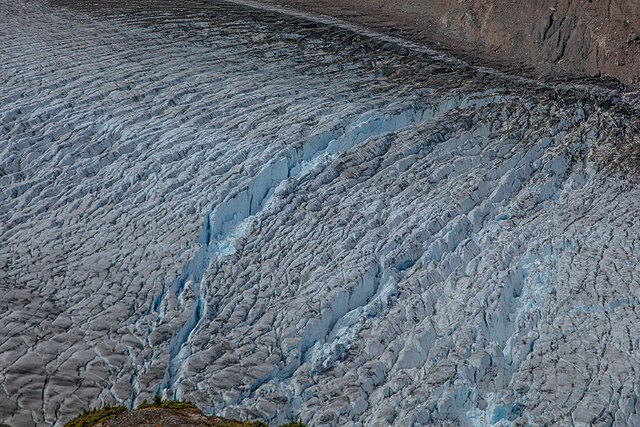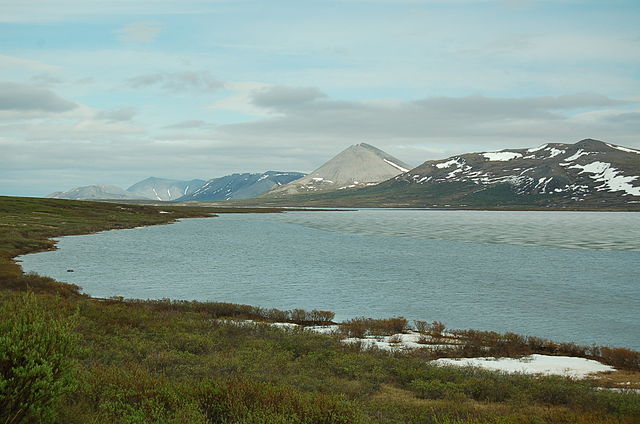When you think of premium seafood, what comes to mind? If Alaska salmon isn’t at the top of your list, you’re missing out on one of nature’s most incredible gifts. These magnificent fish represent more than just a meal – they’re a testament to pristine wilderness, sustainable fishing practices, and unparalleled flavor that has captivated food lovers worldwide.
Alaska’s waters produce some of the world’s finest salmon, and there’s a fascinating story behind every fish that makes its way to your plate. From the icy depths of the Bering Sea to the crystal-clear streams where these remarkable creatures return to spawn, Alaska salmon embodies the untamed spirit of the Last Frontier.
What Makes Alaska Salmon So Special?
Ever wondered why Alaska salmon commands premium prices and devotion from chefs worldwide? The answer lies in a perfect storm of geography, biology, and human stewardship that creates conditions you simply can’t replicate anywhere else.
The Pristine Waters of Alaska
Alaska’s waters are like nature’s own luxury spa for salmon. The state boasts over 3 million lakes and 12,000 rivers, creating an aquatic paradise that remains largely untouched by industrial pollution. These pristine waters maintain the perfect temperature, oxygen levels, and mineral content that allow salmon to thrive naturally.
The cold waters of the North Pacific move slowly, giving salmon time to develop their distinctive flavor profiles and firm texture. Unlike warmer waters where fish grow quickly but may lack depth of flavor, Alaska’s chilly environment forces salmon to develop rich, complex tastes and healthy fat content that translates to incredible eating experiences.
Think of it this way: Alaska salmon are like fine wine grapes grown in perfect terroir. The environment shapes every aspect of their development, from the bright red color of sockeye to the buttery richness of king salmon.
Wild vs. Farmed: Why Alaska’s Wild Salmon Wins

Here’s where Alaska salmon truly shines – they’re 100% wild. While farmed salmon dominates many markets, Alaska law actually prohibits salmon farming, ensuring that every Alaska salmon lived its entire life in the wild, following ancient migration patterns and feeding on natural prey.
Wild Alaska salmon swim thousands of miles during their lifetime, developing muscle tone and flavor that farmed fish simply can’t match. They feed on krill, small fish, and marine organisms that give them their natural color and omega-3 rich profile. Farmed salmon, by contrast, often receive artificial coloring and have different nutritional profiles due to controlled diets.
The difference is like comparing a marathon runner to someone who’s been sitting on the couch – wild Alaska salmon are lean, strong, and packed with natural goodness that you can actually taste.
The Five Species of Alaska Salmon
Alaska waters host five distinct salmon species, each with unique characteristics that make them special. Understanding these differences helps you choose the perfect salmon for your needs and preferences.
King Salmon (Chinook): The Crown Jewel
King salmon earns its royal name through sheer magnificence. These giants can weigh up to 50 pounds, though most market fish range from 15-30 pounds. What sets kings apart isn’t just size – it’s their incredibly rich, buttery texture and deep, complex flavor that melts in your mouth.
The high oil content in king salmon makes it incredibly forgiving to cook, staying moist even if slightly overcooked. This species commands the highest prices, but many consider it worth every penny for special occasions. King salmon season typically runs from May through September, with peak quality occurring mid-summer.
Chefs love king salmon for its versatility – it’s equally stunning grilled, baked, or served as sashimi. The meat ranges from deep red to pale pink, and some rare kings even have white flesh that’s considered a delicacy.
Sockeye Salmon (Red): The Flavor Champion
If king salmon is the luxury sedan, sockeye is the sports car – lean, intense, and packed with personality. Sockeye salmon delivers the most pronounced salmon flavor, with firm texture and brilliant red flesh that’s absolutely stunning on the plate.
These fish are smaller than kings, typically weighing 5-8 pounds, but what they lack in size they make up for in character. Sockeye has lower oil content than king salmon, making it perfect for those who want robust salmon flavor without excessive richness.
The deep red color comes from their diet of krill and small crustaceans, and this same diet contributes to sockeye’s exceptional nutritional profile. Many nutritionists consider sockeye the healthiest salmon option due to its high protein and omega-3 content relative to its lower fat content.
Coho Salmon (Silver): The Versatile Choice
Coho salmon represents the perfect middle ground – not as rich as king, not as intense as sockeye, but delicious in its own right. These fish typically weigh 6-12 pounds and offer mild, slightly sweet flavor with medium oil content.
What makes coho special is its incredible versatility. The moderate flavor profile works beautifully with various seasonings and cooking methods, making it an excellent choice for salmon newcomers or when cooking for groups with diverse tastes.
Coho’s texture is firm yet tender, and it holds up well to grilling, smoking, or baking. The flesh is orange-red and has a beautiful appearance that looks fantastic in presentations. Many restaurants choose coho for salmon dishes because it consistently delivers good results without overwhelming other flavors.
Pink Salmon (Humpback): The Abundant Option
Pink salmon might be the smallest of Alaska’s salmon species, but it plays a huge role in both ecology and economy. These fish typically weigh 3-5 pounds and offer mild, delicate flavor with the lowest oil content among Alaska salmon.
Pink salmon’s gentle flavor makes it incredibly approachable for those who might be intimidated by “fishy” tastes. It’s also the most affordable Alaska salmon option, making premium wild fish accessible to more families. The light pink flesh has a fine texture that works well in salmon burgers, salads, or any preparation where you want salmon flavor without overwhelming richness.
Commercially, pink salmon supports significant canning operations and represents the largest volume salmon fishery in Alaska. Despite being abundant, Alaska’s sustainable management ensures pink salmon populations remain healthy and productive.
Chum Salmon (Dog): The Underrated Gem
Chum salmon often gets overlooked, but this species deserves serious consideration. Weighing 7-18 pounds, chum offers mild flavor, lower oil content, and firm texture that works beautifully in many preparations.
The name “dog salmon” comes from the pronounced teeth that males develop during spawning, not from any quality issues. In fact, chum salmon is prized in many cultures for its clean taste and firm texture. Japanese markets particularly value chum salmon, often paying premium prices for high-quality specimens.
Chum salmon’s lower oil content makes it perfect for smoking, and its firm texture holds up well in soups, stews, and other preparations where you want the salmon to maintain its integrity. It’s also an excellent choice for those watching fat intake while still wanting wild Alaska salmon’s nutritional benefits.
Alaska Salmon Fishing Industry and Sustainability

Alaska’s salmon industry represents one of the world’s most successful examples of sustainable fisheries management. This isn’t just good environmental practice – it’s smart business that ensures salmon will be available for future generations.
Sustainable Fishing Practices
Alaska takes salmon management seriously, with some of the strictest regulations in the world. The state manages salmon on a “maximum sustained yield” basis, meaning they calculate exactly how many fish can be harvested while ensuring adequate numbers return to spawn and maintain healthy populations.
Fishing seasons are carefully timed and monitored, with biologists counting returning salmon and adjusting harvest quotas in real-time. If salmon returns appear lower than expected, fishing stops immediately. This adaptive management approach has kept Alaska salmon populations healthy even as many other fisheries worldwide have collapsed.
Alaska also requires that salmon must actually return to their natal streams before any commercial fishing can begin. This ensures that each salmon population maintains its genetic diversity and spawning success. It’s like having a built-in insurance policy for the future.
Economic Impact on Alaska
Salmon fishing isn’t just an industry in Alaska – it’s a way of life that supports thousands of families and rural communities. The commercial salmon fishery generates hundreds of millions of dollars annually and provides employment for fishermen, processors, transporters, and countless support businesses.
Many Alaska Native communities depend on salmon for both subsistence and commercial purposes, maintaining traditions that stretch back thousands of years. These communities often have the deepest understanding of salmon behavior and habitat needs, making them valuable partners in conservation efforts.
The economic ripple effects extend far beyond Alaska, supporting seafood distributors, restaurants, and retailers throughout North America and beyond. When you buy Alaska salmon, you’re supporting an entire network of people committed to sustainable practices.
Nutritional Benefits of Alaska Salmon
Alaska salmon isn’t just delicious – it’s a nutritional powerhouse that offers incredible health benefits. Understanding these benefits helps you appreciate why nutrition experts consistently recommend salmon as part of a healthy diet.
Omega-3 Fatty Acids and Heart Health
Wild Alaska salmon contains exceptionally high levels of omega-3 fatty acids, particularly EPA and DHA, which your body can’t produce on its own. These essential fats support heart health, brain function, and may help reduce inflammation throughout your body.
Studies consistently show that people who eat salmon regularly have lower rates of heart disease, stroke, and other cardiovascular problems. The omega-3s in salmon help reduce triglycerides, lower blood pressure, and may even help prevent dangerous heart rhythm abnormalities.
What makes Alaska salmon special is the natural omega-3 content developed through wild feeding. Unlike supplements or farmed fish with added omega-3s, wild salmon provides these nutrients in their natural form, which your body can more easily absorb and utilize.
Protein Power and Essential Nutrients
A single serving of Alaska salmon provides about 25-30 grams of complete protein, containing all essential amino acids your body needs. This high-quality protein supports muscle maintenance, immune function, and helps you feel satisfied after meals.
Beyond protein and omega-3s, Alaska salmon provides vitamin D, vitamin B12, selenium, and potassium. Vitamin D supports bone health and immune function, while B12 is crucial for nerve function and red blood cell formation. Selenium acts as a powerful antioxidant, and potassium helps regulate blood pressure.
The combination of nutrients in Alaska salmon works synergistically, meaning they enhance each other’s benefits. It’s like getting a premium multivitamin that actually tastes amazing and leaves you feeling satisfied.
How to Choose and Prepare Alaska Salmon
Getting the most from your Alaska salmon investment requires knowing how to select, store, and prepare it properly. These skills ensure you experience the full potential of this incredible fish.
Selecting Fresh vs. Frozen Alaska Salmon
Fresh Alaska salmon should smell like the ocean – clean, briny, and pleasant. Avoid any fish with strong “fishy” odors, which indicate deterioration. The flesh should be firm and spring back when pressed, and the color should be vibrant and consistent.
However, don’t dismiss frozen Alaska salmon. Much Alaska salmon is flash-frozen on boats or immediately after landing, preserving peak quality better than “fresh” fish that’s been transported for days. High-quality frozen salmon often tastes better than fresh fish that’s been sitting around.
When buying frozen, look for packages without ice crystals or freezer burn. The packaging should be intact, and the fish should feel completely solid. Properly frozen Alaska salmon maintains quality for 6-12 months, giving you flexibility in meal planning.
Best Cooking Methods for Each Species
Different Alaska salmon species respond best to specific cooking methods. King salmon’s high oil content makes it perfect for grilling or broiling, as the fat keeps it moist under high heat. It’s also excellent for slow roasting or smoking.
Sockeye salmon’s firm texture and intense flavor work beautifully with simple preparations that highlight its natural character. Try it grilled with just salt, pepper, and lemon, or use it in dishes where you want pronounced salmon flavor.
Coho salmon’s versatility makes it suitable for almost any cooking method. It’s forgiving enough for beginners but sophisticated enough for advanced techniques. The moderate oil content means it works well both with high-heat methods and gentler approaches like poaching.
Pink and chum salmon’s lower oil content makes them ideal for moist-heat cooking methods like poaching, steaming, or braising. They also work well in preparations where the salmon is mixed with other ingredients, like salmon cakes or pasta dishes.
Where to Buy Authentic Alaska Salmon

Finding genuine Alaska salmon requires knowing where to look and what questions to ask. Not all salmon labeled as “Alaska” actually meets the standards you’re expecting.
Direct from Alaska Suppliers
Many Alaska fishing operations now sell directly to consumers, offering the freshest possible product at competitive prices. These direct relationships often provide better quality than retail channels because the fish hasn’t passed through multiple handlers.
Direct suppliers can tell you exactly when and where your salmon was caught, what methods were used, and how it was processed. This traceability ensures you’re getting authentic Alaska salmon and supports the fishermen and communities that depend on sustainable practices.
Look for suppliers who are transparent about their operations and willing to answer questions about their fishing methods, processing facilities, and shipping procedures. Legitimate Alaska suppliers are proud of their practices and happy to share information.
What to Look for in Quality Retailers
When buying from retailers, look for stores that can tell you the origin of their salmon and provide information about when it was caught. Quality retailers often work directly with Alaska suppliers and can provide documentation of the fish’s journey from boat to store.
Ask about storage and handling practices. Good retailers keep salmon at proper temperatures, rotate stock appropriately, and can advise you on the best species for your intended use. They should also be able to explain the differences between species and suggest preparation methods.
Be wary of prices that seem too good to be true – authentic Alaska salmon commands premium prices because of the quality and sustainable practices involved. If the price seems suspiciously low, ask detailed questions about the fish’s origin and processing.
The Alaska Salmon Life Cycle
Understanding salmon’s incredible life cycle helps you appreciate the remarkable journey these fish undertake and why protecting their habitat is so crucial.
From Ocean to Spawning Grounds
Alaska salmon are anadromous, meaning they’re born in fresh water, migrate to the ocean to mature, then return to their exact birthplace to spawn. This incredible journey can cover thousands of miles and represents one of nature’s most amazing navigation feats.
Young salmon spend varying amounts of time in fresh water before migrating to the ocean. Some species, like pink salmon, head to sea almost immediately after hatching, while others, like coho, may spend 1-2 years in fresh water. In the ocean, they feed and grow for 2-7 years depending on species.
When it’s time to spawn, salmon use an incredible combination of magnetic fields, ocean currents, and chemical cues to find their way back to their birth streams. They stop feeding once they enter fresh water, living off stored body fat as they make their final journey upstream.
Conservation Efforts and Habitat Protection
Protecting salmon habitat requires managing both marine and freshwater environments. Alaska works to maintain clean spawning streams, prevent overfishing, and minimize human impacts on critical areas.
Climate change presents new challenges, as warming waters and changing ocean conditions affect salmon survival and distribution. Alaska’s adaptive management approach allows for adjustments as conditions change, but long-term protection requires broader environmental stewardship.
Habitat restoration projects focus on removing barriers to migration, improving stream conditions, and protecting watersheds from development pressure. These efforts benefit not just salmon but entire ecosystems that depend on the nutrients these fish bring from the ocean to inland areas.
Conclusion
Alaska salmon represents far more than premium seafood – it embodies a successful partnership between human needs and environmental protection. These remarkable fish offer unparalleled flavor, exceptional nutrition, and a connection to one of the world’s last great wilderness areas.
Whether you’re drawn to the rich luxury of king salmon, the intense flavor of sockeye, or the versatility of coho, Alaska salmon provides options for every taste and budget. The commitment to sustainable fishing practices ensures that future generations will continue to enjoy these incredible fish while supporting the communities and ecosystems that depend on them.
By choosing Alaska salmon, you’re not just treating yourself to an exceptional meal – you’re supporting sustainable practices, healthy ecosystems, and the hardworking people who bring this natural treasure from Alaska’s pristine waters to your table.
Frequently Asked Questions
1. What’s the difference between Alaska salmon and Atlantic salmon?
Alaska salmon refers to five Pacific species that are all wild-caught, while Atlantic salmon sold commercially is almost exclusively farm-raised. Alaska salmon offers more varied flavors, firmer texture, and higher omega-3 content due to their wild diet and active lifestyle.
2. How can I tell if salmon is really from Alaska?
Look for clear labeling that specifies “Wild Alaska Salmon” and the species name. Reputable suppliers provide information about when and where the fish was caught. Be suspicious of unmarked salmon or prices that seem too low for genuine Alaska fish.
3. Which Alaska salmon species is best for beginners?
Coho (silver) salmon offers the best introduction to Alaska salmon, with moderate flavor that’s not overwhelming and forgiving texture that’s hard to overcook. Pink salmon is also beginner-friendly with its mild taste and lower price point.
4. Can I eat Alaska salmon raw?
Yes, high-quality Alaska salmon can be eaten raw when properly handled and frozen according to FDA guidelines for sushi-grade fish. King and sockeye salmon are particularly excellent for sashimi and sushi preparations.
5. How long does Alaska salmon last in the refrigerator?
Fresh Alaska salmon should be cooked within 1-2 days of purchase when stored properly at 32-38°F. Frozen salmon maintains quality for 6-12 months in a standard freezer. Always trust your senses – if it smells off or looks questionable, don’t risk it.

